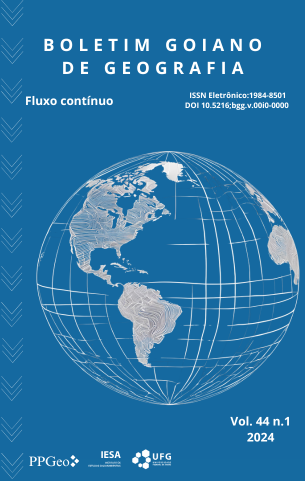AGRICULTURA PRATICADA POR CITADINOS E O PROCESSO DE URBANIZAÇÃO: UMA ANÁLISE SOBRE O CONTEXTO EUROPEU
AGRICULTURE PRACTICED BY CITY DWELLERS AND THE URBANIZATION PROCESS: AN ANALYSIS ON THE EUROPEAN CONTEXT
DOI:
https://doi.org/10.5216/bgg.v44i1.64684Abstract
Abstract. The cultivation of food in urban spaces has been a common practice since the beginning of cities, when the technical and social division of labor was elementary. Food production in home backyards and close to city dwellers’ homes was a major factor in food security. After the industrial revolution, the urban space was converted into merchandise and disputes over its use intensified, with the subsequent reduction of the importance of food cultivation in the cities. Nevertheless, as from the late twentieth century, food cultivation in cities began to have its social and environmental importance acknowledgment, with public policies to support the so-called urban agriculture being developed and implemented. This article main purpose is to provide an understanding of the agriculture practiced in cities and their surroundings in the European context, in order to understand their purposes and relations with the labor market and food supply over time. Changes resulting from the expansion of the urbanization process are evident, as well as the existing relationships between agriculture and urban morphology. The structural transformations of the capitalist economy, starting in the 19th century, culminated in the reduction or disappearance of urban agriculture in certain areas of the main European cities, resulting in the constitution of a specialized food market, whose supply is carried out by merchants who purchase food produced in areas that are increasingly distant from the final consumer.
Keywords: Urban agriculture. Food security. Urban morphology. Technical and social division of labor.
Downloads
Downloads
Published
How to Cite
Issue
Section
License
Authors will not receive any payment for publishing their work in Boletim Goiano de Geografia. Therefore, they must grant all rights to the journal. However, they are entirely and exclusively responsible for the published contents, and editors are free to make corrections or adjustments to texts in conformity with publication guidelines.







